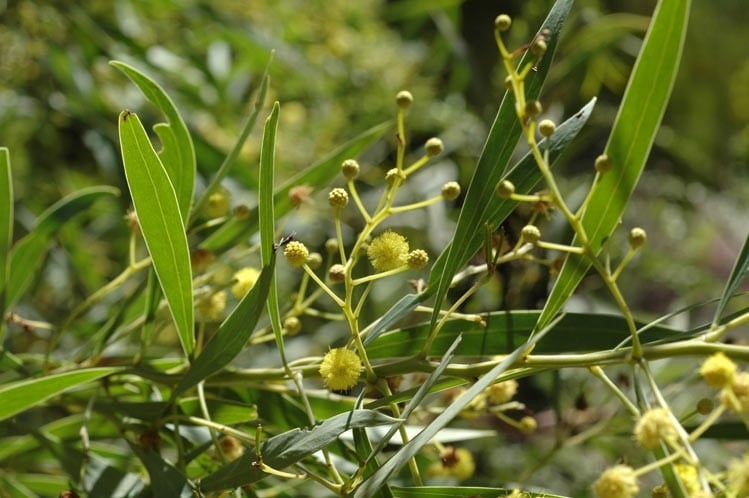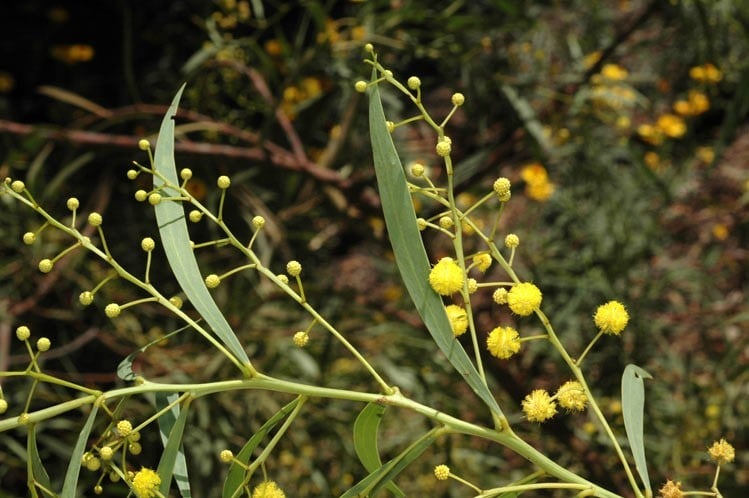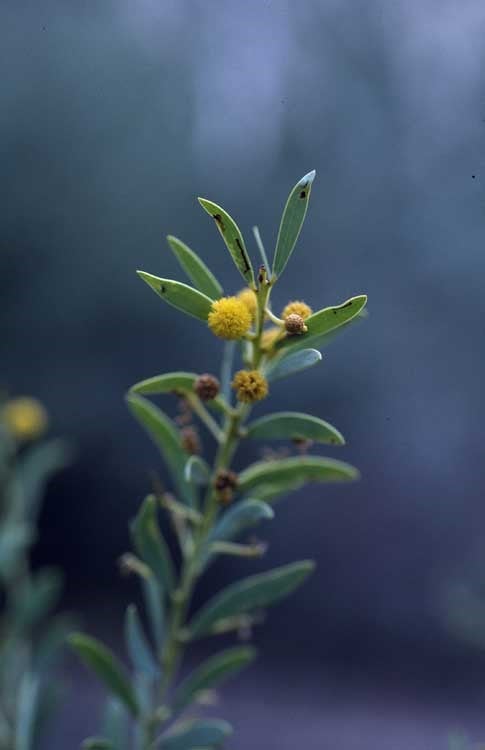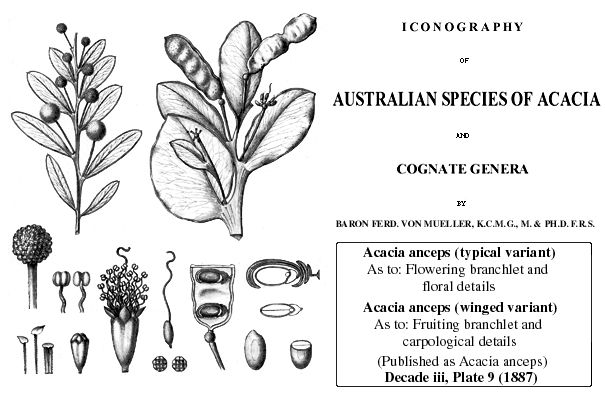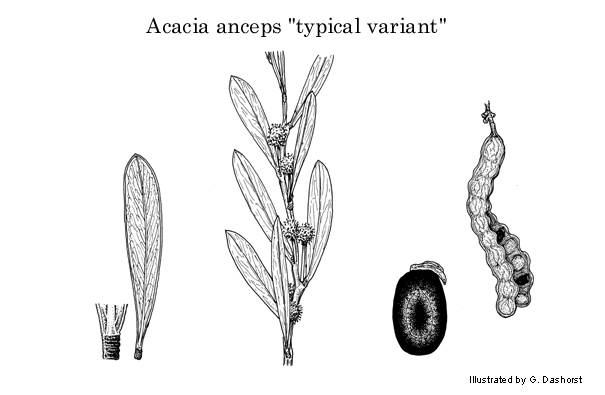Acacia anceps DC.
WATTLE
Acacias of Australia
Family
Fabaceae
Distribution
Occurs principally in coastal areas from Middle Is., Recherche Archipelago, W.A., to the southern parts of the Eyre and Yorke Peninsulas as far as Sturt Bay, S.A.
Description
Bushy spreading shrub to c. 3 m high. Branchlets angled at extremities, glabrous. Phyllodes sometimes continuous with branchlets, normally elliptic to oblanceolate, mostly 2.5–6.5 cm long and 8–30 mm wide, obtuse, sometimes retuse, coriaceous, glaucous, sometimes pale green, glabrous; midrib and marginal nerves prominent; lateral nerves often obscure; pulvinus distinct or poorly developed. Inflorescences simple, 1 per axil, initiated synchronously with phyllodes on new shoots; peduncles (6–) 10–26 mm long, stout, glabrous; heads globular, densely 50–130-flowered, golden. Flowers 5-merous; sepals united. Pods narrowly oblong, straight-edged or slightly constricted between seeds, normally to 6 cm long, 10–15 mm wide, firmly crustaceous to woody, pruinose at least when young, glabrous. Seeds (few seen) transverse, oblong to elliptic, 4.5–6 mm long, ±dull, variable in colour, c. 1/2 encircled by red-brown funicle.
Habitat
Grows in calcareous sand and shallow red-brown sand, in coastal dune vegetation or open scrub.
Specimens
W.A.: Middle Is., A.S.Weston 8932 (PERTH); Eucla, 1882, J.Oliver (MEL). S.A.: Port Lincoln, J.B.Cleland (AD96705036); Yalata Swamp, A.E.Orchard 3205 (AD, PERTH); Ceduna, near Cape Thevenard, B.R.Maslin 4817 (PERTH); Sturt Bay, D.J.E.Whibley 5531 (AD).
Notes
Seed colour, ranging as it does from uniformly black to dark brown mottled yellow, is unusual and requires further investigation. On some plants from W.A. the peduncles are only c. 6 mm long.
Much of the variation within this species is accommodated by two phyllode variants, as discussed by B.R.Maslin & D.J.E.Whibley, Nuytsia 6: 25 (1987). Intermediates between the two variants occur, particularly on parts of western Eyre Penin. in the Venus Bay and Streaky Bay areas. The types of both A. anceps and A. anceps var. angustifolia represent the widespread variant which is characterised by rather long (mostly 3.5–6.5 x 0.8–2.1 cm), oblanceolate, distinctly pulvinate phyllodes and flowers 38–80 per head. The second variant of A. anceps is now treated under A. sp. Winged (C.R.Alcock 4936).
A member of the 'Acacia microbotrya group' allied to A. alcockii; it appears to hybridise with A. leiophylla, A. nematophylla (see A. anceps × nematophylla) and A. notabilis, fide B.R.Maslin & D.J.E.Whibley, Nuytsia 6: 26 (1987).
FOA Reference
Data derived from Flora of Australia Volumes 11A (2001), 11B (2001) and 12 (1998), products of ABRS, ©Commonwealth of Australia
Author
Edited by B.R.Maslin
B.R.Maslin
This identification key and fact sheets are available as a mobile application:
URL: https://apps.lucidcentral.org/wattle/
© Copyright 2018. All rights reserved.

